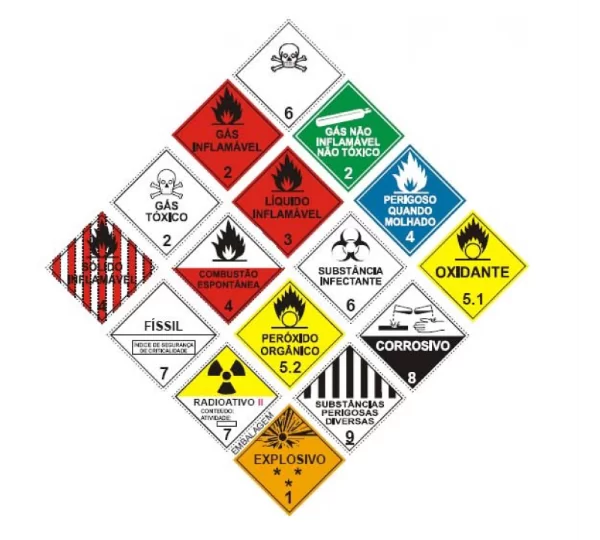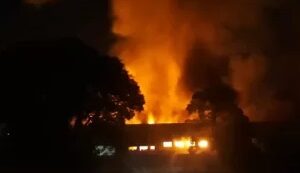
Workplace Safety: Minimizing Risks and Preventing Accidents Through Proper Handling of Dangerous Goods
In any industry, safety is a top priority. Whether in construction, manufacturing, or laboratories, the risk of accidents is always present, especially when dealing with hazardous materials. Ensuring that workers understand the potential dangers of these materials and know how to handle them properly can significantly reduce the risk of incidents. One area that often requires extra attention is the handling and classification of dangerous goods.
Understanding Dangerous Goods and Their Risks
Dangerous goods are classified based on their physical and chemical properties. These substances can pose a variety of hazards, including explosion, flammability, toxicity, and environmental damage. The risks associated with these goods depend not only on their characteristics but also on the quantity being transported and the safety measures in place.
Some of the most common dangers associated with hazardous substances are:
- Explosiveness: Some materials have the potential to explode under certain conditions.
- Flammability: Substances that can catch fire easily pose significant risks, especially in industries dealing with high temperatures.
- Toxicity: Toxic substances can cause severe health issues, including death, through inhalation, ingestion, or skin contact.
- Oxidizing Agents: These substances can cause or enhance the combustion of other materials, leading to potentially dangerous situations.
- Radioactive Materials: Exposure to radioactive substances can have long-term health consequences.
The key to minimizing these risks is to classify the substances appropriately, provide adequate training for employees, and ensure that emergency procedures are in place.
Classes of Dangerous Goods
Dangerous goods are classified into several categories based on the specific risk they present. For example, Class 1 includes explosives, with subclasses such as substances with a mass explosion hazard, while Class 2 includes gases under pressure, with flammable, non-flammable, and toxic gases. Other classes cover liquids, solids, corrosives, and radioactive substances.
- Class 1: Explosives – Substances that can explode, presenting a significant danger to workers and the environment.
- Class 2: Compressed and Liquefied Gases – Gases under pressure that can cause explosions or fires.
- Class 3: Flammable Liquids – Liquids that can easily catch fire and cause fires or explosions.
- Class 4: Flammable Solids – Solids that can ignite spontaneously or when exposed to water.
- Class 5: Oxidizing Substances and Organic Peroxides – Chemicals that can intensify the combustion of other materials.
- Class 6: Infectious Substances – Substances that pose health risks such as toxic chemicals or infectious pathogens.
- Class 7: Radioactive Substances – Materials that emit radiation and can have long-term health impacts.
- Class 8: Corrosives – Substances that can cause severe skin damage or burns.
- Class 9: Miscellaneous Dangerous Substances – Substances that pose a variety of other hazards.
For a detailed explanation of these classes and how to properly handle hazardous materials, you can read more here.
Preventing Accidents: Best Practices
To minimize the risks posed by dangerous goods and ensure a safe workplace, here are several best practices that should be followed:
- Proper Classification and Labeling: It’s critical to correctly classify and label hazardous materials. Misclassifying a substance can lead to improper handling and increased risk. Workers must be trained to identify the labels and understand the potential hazards associated with each substance.
- Employee Training: Employees should receive regular safety training to understand the risks associated with dangerous goods and how to handle them. This includes the safe use of personal protective equipment (PPE), as well as the proper disposal of hazardous waste.
- Regular Safety Inspections: Ongoing inspections help identify potential hazards and ensure that safety protocols are being followed. Regular checks of storage areas, equipment, and emergency systems can prevent accidents before they occur.
- Emergency Response Procedures: It’s crucial to have clear, well-practiced emergency response procedures in place for accidents involving dangerous goods. In case of a spill, leak, or fire, employees should know how to react quickly and efficiently to minimize the damage.
- Safe Storage and Transportation: Dangerous goods should be stored and transported according to safety guidelines. This includes proper segregation, labeling, and ensuring that containers are leak-proof and secure during transit.
Understanding Flammability and Explosion Risks
Among the various hazards, flammability often commands the most attention. Flammable materials can easily ignite and cause widespread destruction. Substances with a low flashpoint, meaning they emit flammable vapors at lower temperatures, are especially hazardous. Understanding the flashpoints of chemicals, as well as implementing proper fire safety measures, can greatly reduce the risk of fires or explosions.
For more information on preventing fires and managing flammable substances, check out this toolbox talk on fall protection.
Conclusion
The risks associated with dangerous goods can be minimized through proper classification, employee training, and the implementation of safety protocols. By understanding the physical and chemical properties of hazardous materials, companies can reduce the likelihood of accidents, prevent injuries, and protect the environment. Regular training, clear emergency procedures, and a commitment to safety are essential components of any workplace safety program. For more resources on safety, visit Safety for Job.




0 Comentários